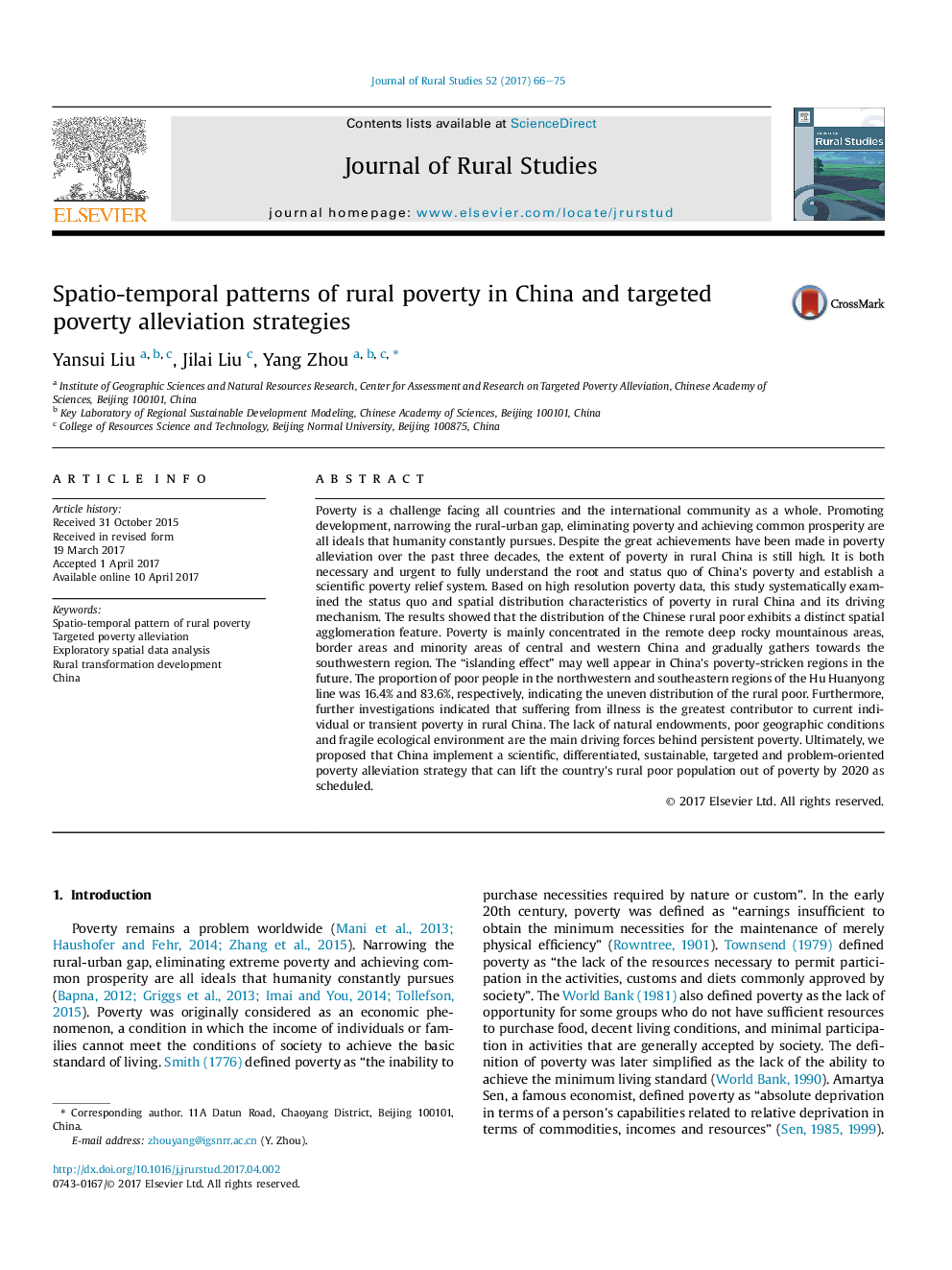| کد مقاله | کد نشریه | سال انتشار | مقاله انگلیسی | نسخه تمام متن |
|---|---|---|---|---|
| 6460102 | 1421779 | 2017 | 10 صفحه PDF | دانلود رایگان |
- We examine the spatio-temporal patterns and driving forces of poverty in rural China.
- The distribution of Chinese rural poor exhibits a distinct spatial agglomeration.
- The “islanding effect” may well appear in China's poverty-stricken regions in the future.
- Suffering from illness is the greatest contributor to transient poverty in rural China.
- Some people-oriented anti-poverty measures and suggestions are proposed.
Poverty is a challenge facing all countries and the international community as a whole. Promoting development, narrowing the rural-urban gap, eliminating poverty and achieving common prosperity are all ideals that humanity constantly pursues. Despite the great achievements have been made in poverty alleviation over the past three decades, the extent of poverty in rural China is still high. It is both necessary and urgent to fully understand the root and status quo of China's poverty and establish a scientific poverty relief system. Based on high resolution poverty data, this study systematically examined the status quo and spatial distribution characteristics of poverty in rural China and its driving mechanism. The results showed that the distribution of the Chinese rural poor exhibits a distinct spatial agglomeration feature. Poverty is mainly concentrated in the remote deep rocky mountainous areas, border areas and minority areas of central and western China and gradually gathers towards the southwestern region. The “islanding effect” may well appear in China's poverty-stricken regions in the future. The proportion of poor people in the northwestern and southeastern regions of the Hu Huanyong line was 16.4% and 83.6%, respectively, indicating the uneven distribution of the rural poor. Furthermore, further investigations indicated that suffering from illness is the greatest contributor to current individual or transient poverty in rural China. The lack of natural endowments, poor geographic conditions and fragile ecological environment are the main driving forces behind persistent poverty. Ultimately, we proposed that China implement a scientific, differentiated, sustainable, targeted and problem-oriented poverty alleviation strategy that can lift the country's rural poor population out of poverty by 2020 as scheduled.
Journal: Journal of Rural Studies - Volume 52, May 2017, Pages 66-75
